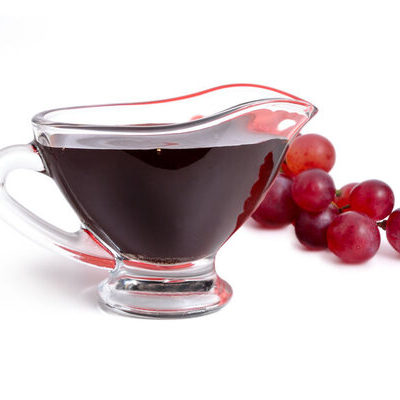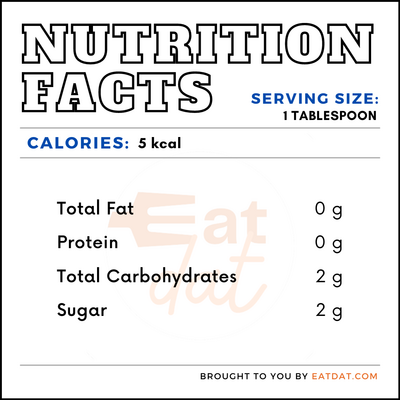
Balsamic Vinegar
What is Balsamic Vinegar?
Balsamic vinegar is a dark, highly concentrated flavored vinegar that originates from Italy. The word balsamic comes from the Italian word balsamico, which means “restorative” or “curative”. This particular type of vinegar can be made from only grape must or sometimes partially from grape must.
- “Grape must” refers to the fresh juice extracted from crushed grapes without removing the skin, seeds, or stems.
- Traditional types of this vinegar that are made in Modena, Italy often carry a PDO (Protected Designation of Origin) status.
The top balsamic vinegar brands on the market are:
- The San Giacomo Aged Vinegar Tradizionale
- La Ca Dal Non Traditional Demetria Extra Vecchio
- Acetaia Leonardi Sigillo Argento
- Nobili Sapori IGP
- The San Giacomo
- B.R Cohn 15 Year Modena
- Emilia
- Villa Manodori
- Williams Sonoma White
- Sparrow Lane Blackberry
Origin of balsamic vinegar
The first reference in history of this vinegar dates back to 1049 when a bottle of it is alleged to have been served to emperor Enrico III of Franconia as a gift. The history of this drink is officially traceable to the poem “Vita Mathildis” (life of Matilda of Canossa), which the Benedictine Monk Donizone wrote of Canossa (Reggio Emilia) in the year 1112. By the 13th century, this vinegar was produced extensively in Modena. However, it wasn’t until the 19th century that this product gained international recognition.
Functions
The product brings a tangy, and sometimes sweet, taste to salads of all kinds. Also, it can also be drizzled over cooked dishes and used for marinades. It helps balance the acidity in a meal. Sometimes, this vinegar is even used by Italians mixed with water for use as a tonic.
Nutrition
A one-tablespoon serving of this vinegar contains:

This product adds flavor to healthy dishes without adding fat or sodium. Also, it is a source of calcium, phosphorus, potassium, magnesium, and acetic acid. Some health benefits of this vinegar include improving skin health, lowering blood sugar and cholesterol, promoting digestion, aiding wound healing, and encouraging weight loss.
However, if consumed in excess, this food can have adverse effects. Side effects like stomach upset, throat inflammation, damages to food pipe are associated with overconsumption of this vinegar.
Commercial production
Commercial production of balsamic vinegar is relatively quick as it involves a mix of finished products. The vinegar is mixed with 8% acetic acid, sugar color, and wood flavor. Some producers also go a little further by adding a mix of sugar and caramel into the vinegar to give it the look of traditional vinegar. While homemade vinegar is higher quality, the commercially produced counterpart is more readily available.
Application
The procedure and recipe for making balsamic vinegar are as follows:
For a start, one would need to acquire Italian grapes like Lambrusco. Ancellotta, and Trebbiano, which are all classified as white wine grapes. Then, the ripened grapes need to be crushed and the mush left to simmer in a free pot for a maximum of two days until a sweet syrup measures about half its original content. After that, allow it to cool and transfer to a barrel and leave it untouched for a period spanning six months to one year. It’s possible to add vinegar or let yeast occur naturally. Finally, the mixture will turn into alcohol and later into vinegar.
Once this is completed, the vinegar is ready but it is not yet balsamic vinegar. This requires an additional ten years, and as it ages, the vinegar begins to evaporate and it should be transferred to smaller-sized barrels to give it different flavors. These barrels should be made of wood from oak, mulberry, and chestnut trees. If you don’t intend to wait eleven years to make this vinegar, it is relatively cheap to purchase from a store.
Balsamic vinegar should be stored in a cool, dry area away from light. Heat and light can affect the taste of this product. After opening the bottle, it should be tightly sealed when not in use. Furthermore, if you store vinegar in a bottle without its capping, it may get contaminated.
Balsamic vinegar recipes
This vinegar is a versatile ingredient. Some popular recipes include:
- Balsamic Vinaigrette
- Balsamic Salad Dressing
- Feta-stuffed Lamb with Fried Potatoes
- Apricot, Goat Cheese and Almond Bites
- Roast Potatoes with Polenta, Balsamic and Thyme
FDA Regulation
The Food & Drug Administration has no specific regulations for balsamic vinegar. However, the organization regulates the reference amount consumed per eating occasion for vinegar. The FDA regards vinegar as an ingredient in salad dressing and outlines specific requirements for its standardization. They also regard vinegar as a substance generally recognized as safe.
Reference
“The History of Traditional Balsamic Vinegar.” Italy Magazine, Italy Magazine, www.italymagazine.com/dual-language/history-traditional-balsamic-vinegar.
Giudici, Paolo, et al. “Traditional Balsamic Vinegar as Coded by Us.” Balsamic Vinegars, 2015, pp. 85–109., doi:10.1007/978-3-319-13758-2_5. https://www.healthline.com/health/balsamic-vinegar-health-benefits
“Balsamic Vinegar.” Fischerauer, Fischerauer Feinstes GmbH. https://www.essig.at/en/balsamic-vinegar/#:~:text=Industrial%20ways&text=Ready%20vinegar%20with%208%20%25%20acetic,call%20it%20%E2%80%9Cbalsamic%20vinegar%E2%80%9D
